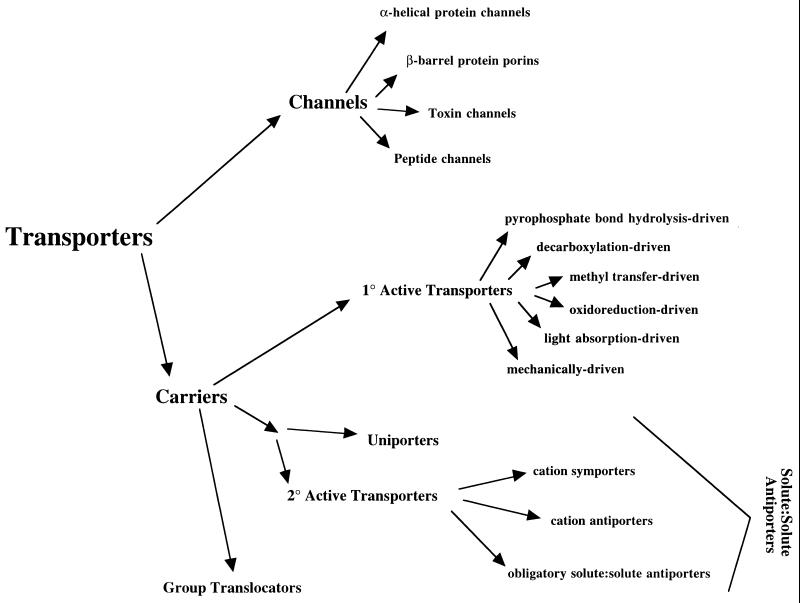FIG. 1.
Scheme illustrating the currently recognized primary types of transporters found in nature. These proteins are initially divided into channels and carriers. Channels are subdivided into α-helical protein channels, β-barrel protein porins (mostly in the outer membranes of gram-negative bacteria and eukaryotic organelles), toxin channels, and peptide channels. Carriers are subdivided into primary active carriers, secondary active carriers (including uniporters), and group translocators that modify their substrates during transport. Primary sources of chemical energy that can be coupled to transport include pyrophosphate bond (i.e., ATP) hydrolysis, decarboxylation, and methyl transfer. Oxidation-reduction reactions, light absorption, and mechanical devices can also be coupled to transport (see text). Secondary active transport is driven by ion and other solute (electro)chemical gradients created by primary active transport systems. The only well-established group-translocating system found in nature is the bacterial phosphoenolpyruvate:sugar PTS, which phosphorylates its sugar substrates during transport.

